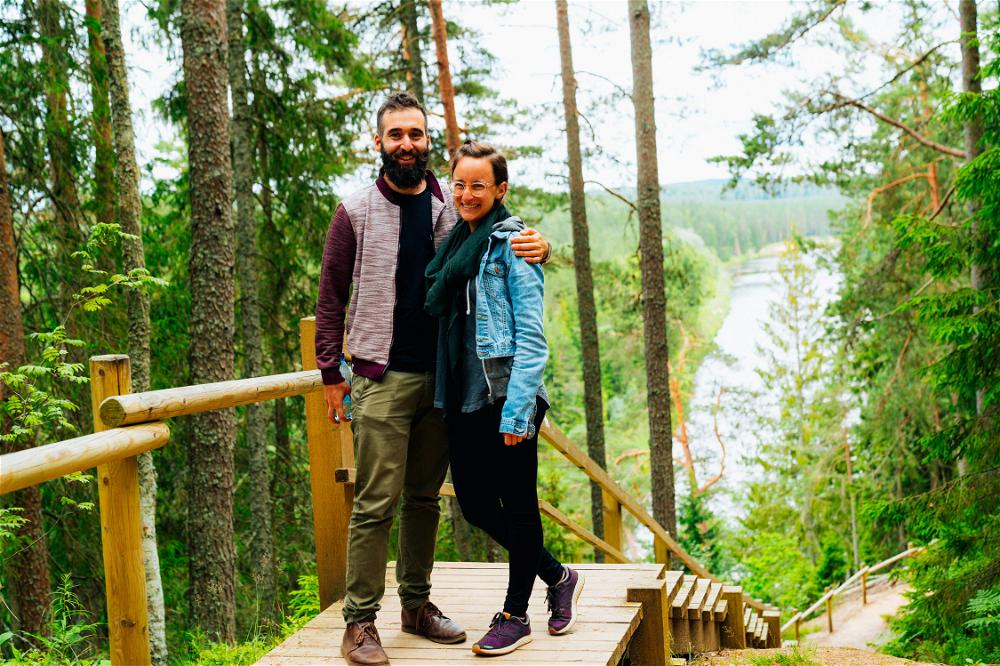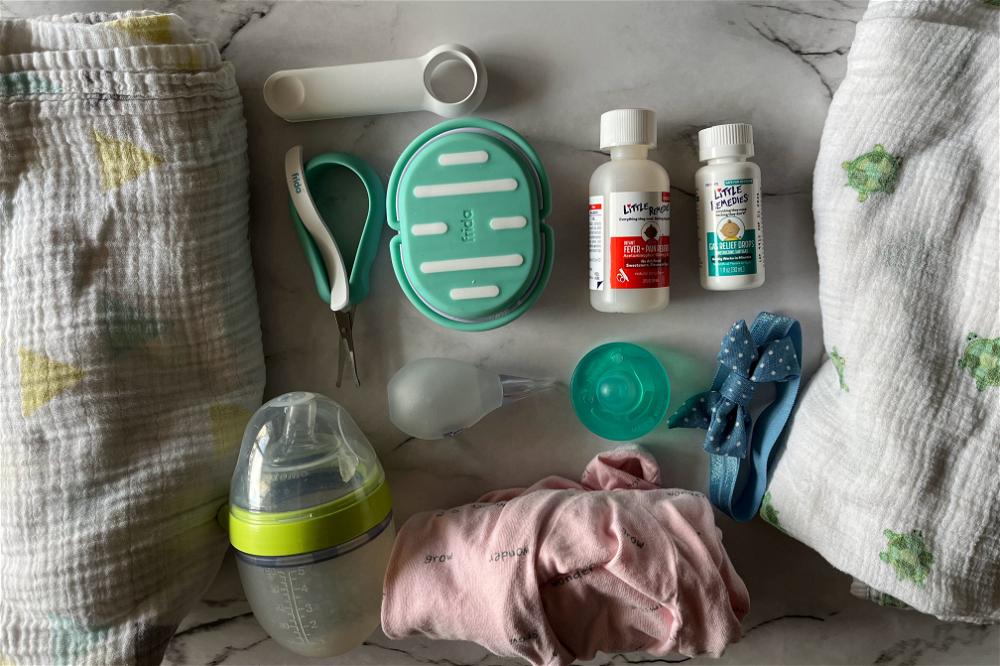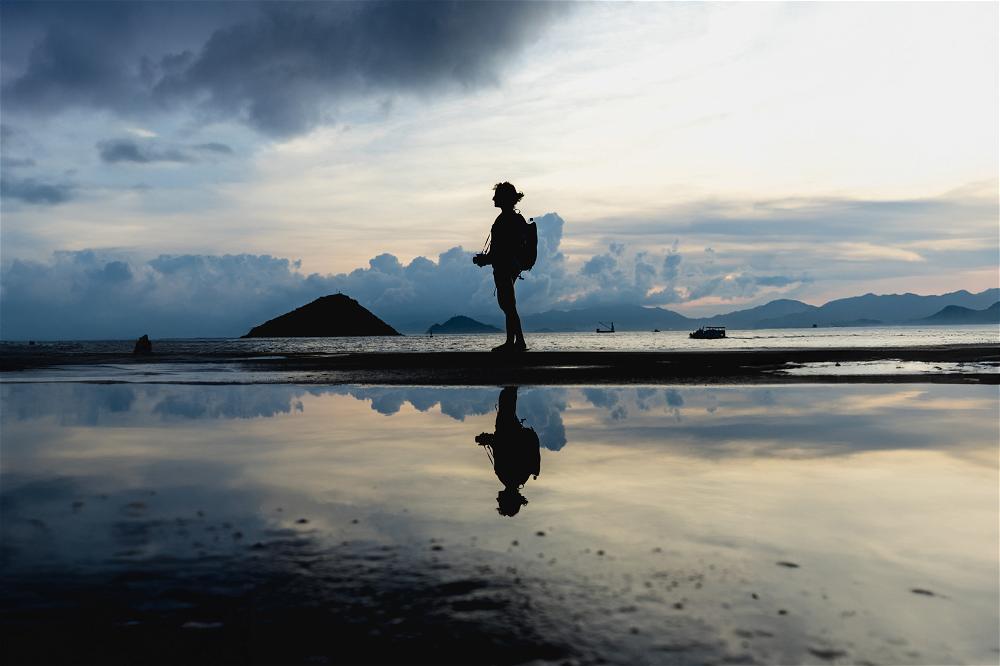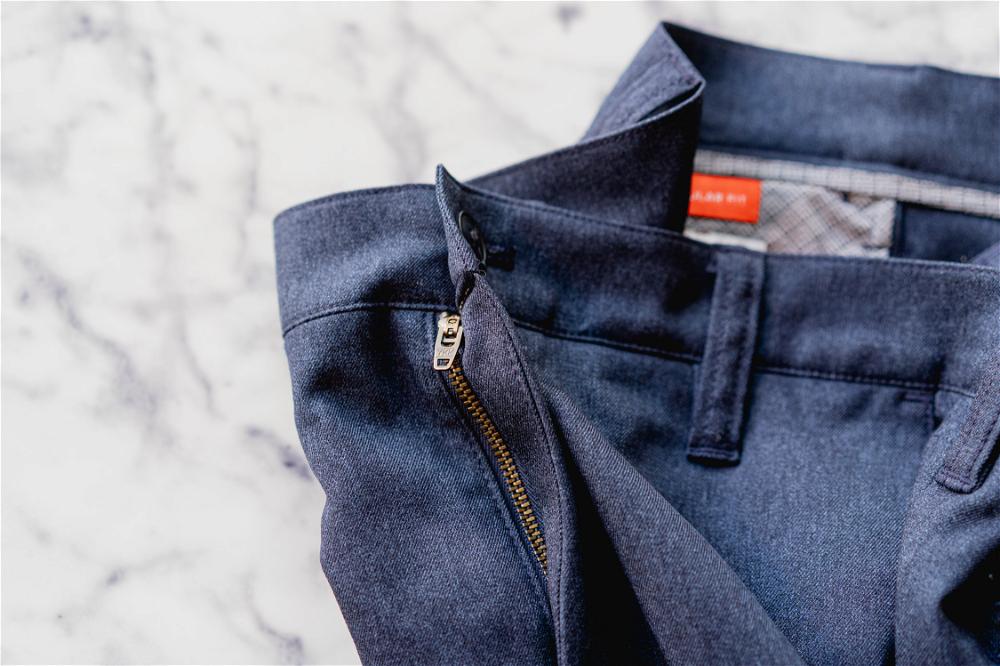11 Things to Do If Your Baby or Toddler Gets Sick While Traveling
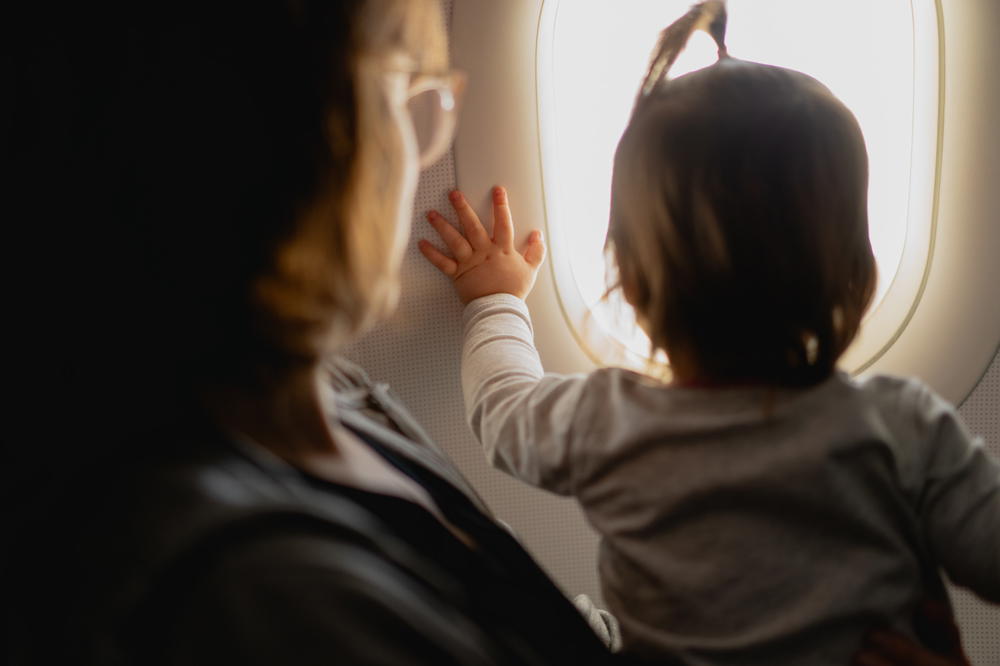
What do you do if your child gets sick on vacation? Find out the things to do when a baby or toddler gets a fever or illness on a trip, travel abroad or a road trip.
This article may contain affiliate links. We earn a small commission when you purchase via those links — at no extra cost to you. It's only us (Becca & Dan) working on this website, so we value your support! Read our privacy policy and learn more about us.
Table of contents
- Try to remain calm
- Determine if you have the remedies on hand
- Figure out how to see a doctor nearby
- Go to a local pharmacy
- Call your pediatrician at home
- Go to the ER if needed
- Give it time
- Keep your child hydrated
- Focus on how to get sleep and rest
- Try to still have fun
- Prepare as best you can for your next trip
On the first two international trips with our baby (who was a toddler on the second vacation), she got sick with fevers both times.
The first trip was to Canada. We found out that our baby was running a high fever. Luckily, we had brought meds from home, and did everything we could to make the trip OK.
The second trip was farther away to Colombia, and 12 days long. Despite being prepared with a thermometer in our bags this time, our daughter still had a fever and was congested. We thought she might have an ear infection, and we thought we should see a doctor.
In this list, find out what to do if your child gets sick while you’re traveling away from home, including what we did about seeing doctors, getting medications and reaching our pediatrician. Plus, see how I plan for scenarios like these in advance.
Please keep in mind that we are not a health nor medicine blog, and we are not doctors. The following list was written from personal experience and includes loose recommendations only. For all medical treatments and medical needs, contact your physician. Half Half Travel is a travel blog.
Try to remain calm
The first time you see the temperature going up and up on a thermometer while you’re away from home on a trip, you may panic. I’m pretty sure both Dan and I gasped when the temperature read 39 degrees Celsius (102 F) on our Canadian thermometer, when we were on our first trip abroad with our baby in Halifax, Nova Scotia.
What choice did we have though, but to treat our sick baby as best we could? What I had brought with us was infant Tylenol, and after Googling dosages to make sure we recalled it correctly, we hoped our daughter would get better so we could enjoy the trip.
The morning after, we calmed down quite a bit. I remember saying, “Let’s do all the things we planned to do, and just make sure we’re continually treating her with a fever reducer, feeding her and letting her sleep.” And that’s exactly what we did, until we got back home.
My best advice for when you find out your baby or toddler is sick on a much-awaited-for vacation is to stay calm. Chances are, you are more stressed than your child is — that is, if your baby is running a fever and battling a common virus.
Read on, though, to see what else to do when your child gets sick on vacation.
Determine if you have the remedies on hand
It was just my luck that I traveled to Canada with infant Tylenol, but not a thermometer from home. You can bet that my list of essential travel accessories for babies now includes medicine and common remedies.
Luckily, we were able to use our own thermometer from home while we were in Colombia. We had Motrin and Tylenol, and our own syringes brought from home, according to my international toddler packing list.
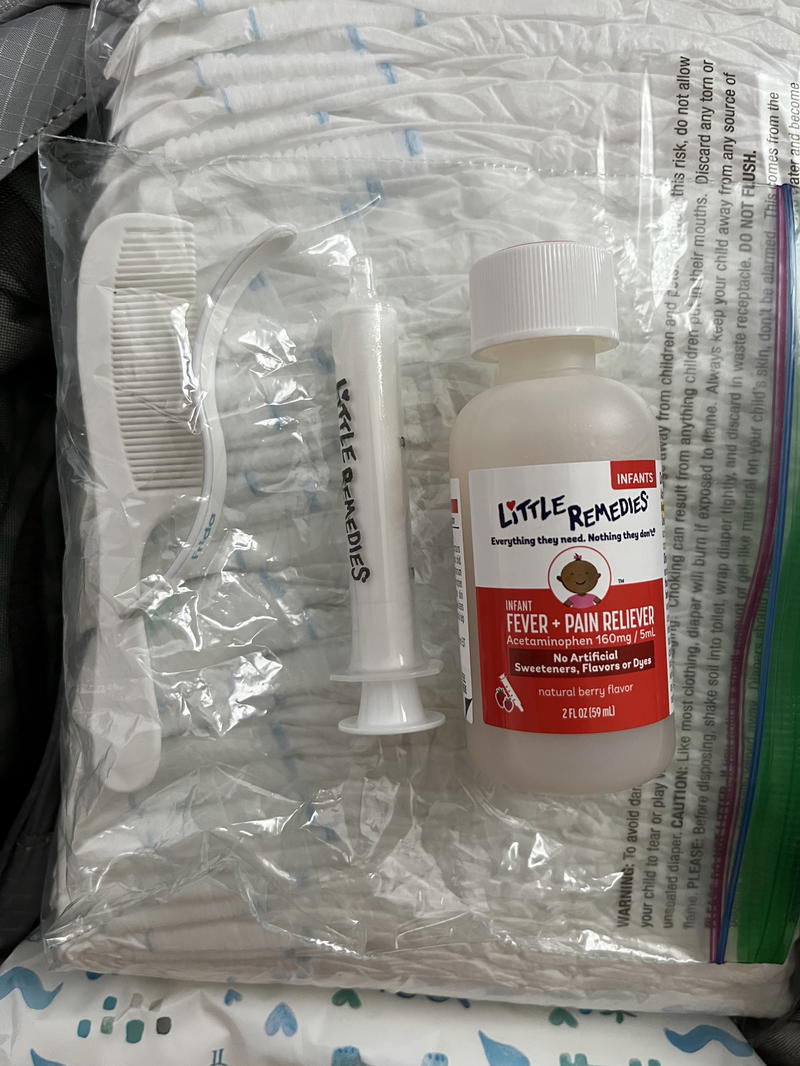
If our child is sick with congestion, we pull out our infant nose aspirator or nose bulb syringe. If it’s a fever, we mitigate it with Infant Motrin or Tylenol.
For diarrhea, we hydrate our child with milk and water, or we can consider Pedialyte (for infants over the age of 1). For allergic reactions, we pack an antihistamine like children’s Benadryl.
If there are other over-the-counter medicines you may require, head to a local pharmacy, drug store or supermarket as soon as you can. For remedies that need to be prescribed, your next task is figuring out how to see a doctor.
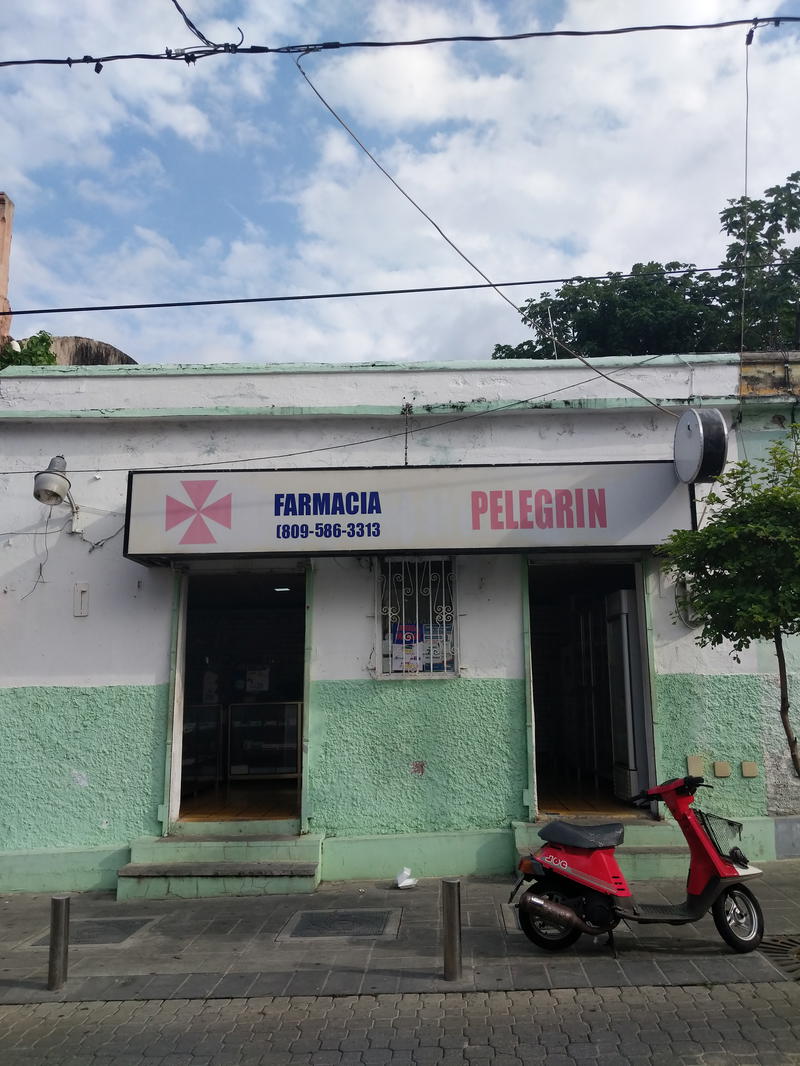
Figure out how to see a doctor nearby
On our trip to Canada, we didn’t even think about seeing a doctor, and luckily, our daughter’s health improved in about 48 hours. In Colombia though, she was running a fever for more than three days when we took matters into our hands to seek a pediatrician in Medellin.
Ask for doctor referrals
We had chosen to go to Medellin, Colombia, because we have good friends (Alex and Ryan) who live there with their toddler. We figured that if anything went wrong (and I verbatim said this before we left), we could potentially see their pediatrician and use all their local know-how about how to treat a sick child in another country.
Ultimately, the complication was that we did not have a car, and any time we needed to take a taxi, we would’ve had to bring along the car seat and drag it with us.
It’s not that this is what stopped us from seeing their pediatrician, who was located at a hospital a few miles away, but we found a better option: the doctor “a domicilio” (in Spanish, it means a doctor that makes house calls).
We were staying at a family-friendly apartment-hotel in Medellin, and I went down to the front desk to ask the concierge about doctors that could come to us, rather than us go to them.
The concierge staff asked the community manager, saying she had a young child as well. She referred me to a medical agency called MediQU, and after I got the phone number in Whatsapp, I sent them a text.
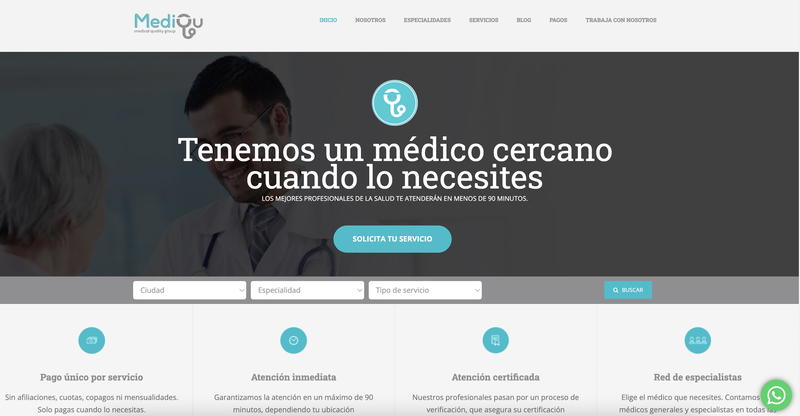
What happened next was that I exchanged texts with an operator, and after a few minutes of providing my personal information, I got a confirmed appointment for 9:00am the next morning with a doctor who was detailed as having had 15 years of experience seeing children.
Use a translation app, or hotel staff
If you’re traveling abroad as a family and you’re seeing a doctor whose English may be limited, use Google Translate to communicate back and forth.
If this is proving to be inconvenient or inaccurate, ask if your hotel staff or someone like your Airbnb host can come act as a translator. Usually, people will be glad to help out.
Go to a local pharmacy
In our case, we had been prescribed five or six things in a list and we were ready to go to a pharmacy and pick up the medications and remedies.
Luckily, Medellin was full of pharmacy options. The doctor recommended a few to us, and then said that any pharmacy was going to be fine. We found one downtown in El Poblado when it was convenient for us, and picked up nasal spray.
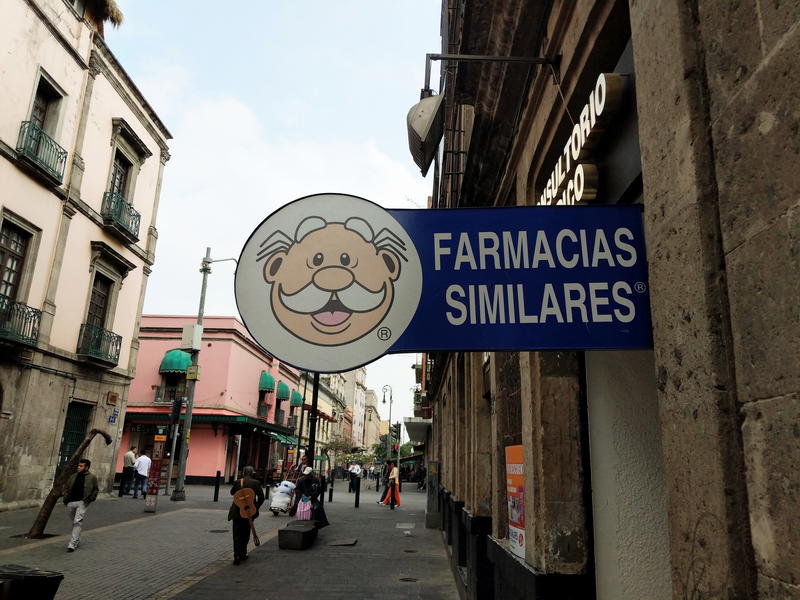
Call your pediatrician at home
Had we chosen to pick up any of the medications prescribed, we were going to call our pediatrician at home to double-check and get a nurse’s advice on whether we should actually administer those medications.
If you’re traveling abroad, make sure you have a way to dial US numbers, whether that’s getting a Google Fi plan for travel or an e-Sim like Airalo, which is what I had most recently. If your pediatrician has Whatsapp, you can also make a Whatsapp-to-Whatsapp call and avoid foreign calling fees completely.
If you’re able to communicate with your child’s pediatrician, sometimes this can give a general peace of mind, or be really helpful about what your next move should be.
Go to the ER if needed
While I personally (and luckily) do not have experience taking my child to an emergency room in another country, my friend Alex does! She was on vacation in the Dominican Republic, and her daughter had an allergic reaction to cashews, which she had never tried before.
She and her husband found themselves on the way to the ER closest to their resort, with a staff person from the hotel as a translator, in order to make sure there’d be no gaps between the English and the Spanish.
This type of experience is certainly stress-inducing and it’s what no one wants for their child. However, if time or medicine will not cure any complications or emergencies that your baby or toddler has, consider determining if seeking immediate medical attention is best.
Give it time
If our child has a fever, stomach virus or allergic reaction, we know that hopefully time will help things pass. I try to consider that if we were at home, I’d be calmer, knowing that I had my entire medicine cabinet nearby, and knowing that our pediatrician is just a quick drive from home.
When you’re away from home on vacation, the days with a sick baby may seem longer and dragging on, especially if your little one’s sleep is being affected and those nights go on forever.
Remember to be patient, as hard as it is. If things do not get better in two or three days, loop back to the advice above about seeking medical attention locally.
Keep your child hydrated
Every parent knows that keeping a baby or toddler hydrated during sickness, as well as giving ample opportunities to sleep and rest, is key.
On vacation, it’s harder, especially if you’re out of the country, or simply out and about and not near the comforts of home in your hotel room.
What we did in Canada was made sure our daughter was getting enough milk and fluids, and eating solids like applesauce or pouches, when she could. (At the time, she was 8 months old.)
In Colombia, she was 15 months old, and eating a diet of three meals, plus milk and water. We encouraged her to eat whenever we could, and tried to make it fun. We tried not to drive ourselves crazy by counting her wet diapers in order to ensure that she was hydrated and on the upswing.
Make sure you have access to formula or milk, your child’s favorite bottles or cups and of course, safe drinking water. If you are so inclined, you can look for Pedialyte (for children 12 months and up) for additional hydration. (I happen to have a lot of experience with this rehydration drink in several countries in Latin America!)
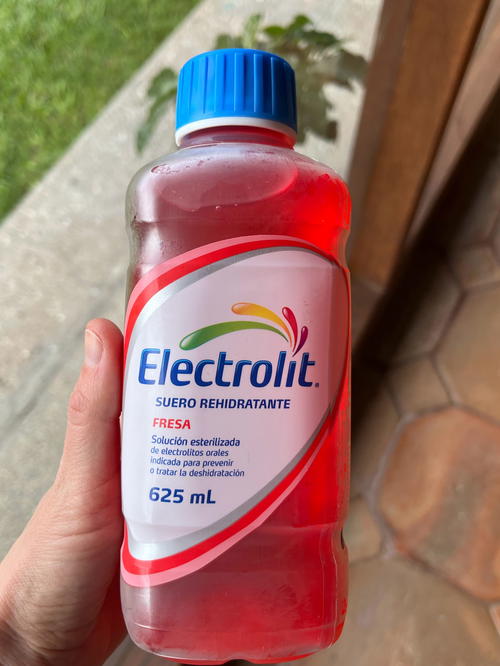
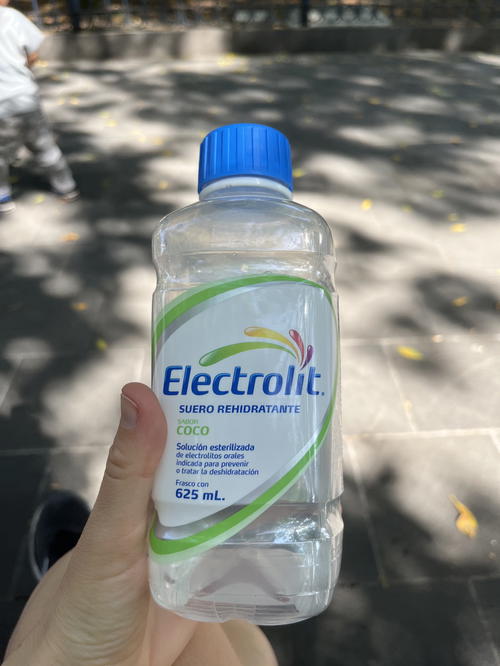
Focus on how to get sleep and rest
In our experience, having a sick child means more naps, and possibly some interrupted night sleep. For both the parents and the child, it can mean some wonky nights and days. To add to the mix, sleeping in a new place like a hotel or B&B means new sounds, different temperatures and different beds.
Try to keep your nighttime routine as standard as possible, and if your child tends to wake during the night if he or she is uncomfortable or sick, plan to go to bed early and scrap the night plans. For me, this meant hitting the hay at 9:30, to pack in my sleep hours in case there was a 2am wakeup (there was) or a 5:30am “up for the day”… because of the nearby rooster on a farm.
If you’re looking for tips on how to sleep more during trying times like these during vacations, head to my list of how to get better sleep during travel.
During the day, help a sick child by making naps possible both at the hotel, or on the go. If your child sleeps well in the stroller, plan to do some walking during naptime and allow for dozing off.
For us, it was walks with our Baby Tula Carrier Lite, our hyper-compact travel baby carrier that holds a child up to 30 lbs. We’ll be using it until our daughter sizes out!
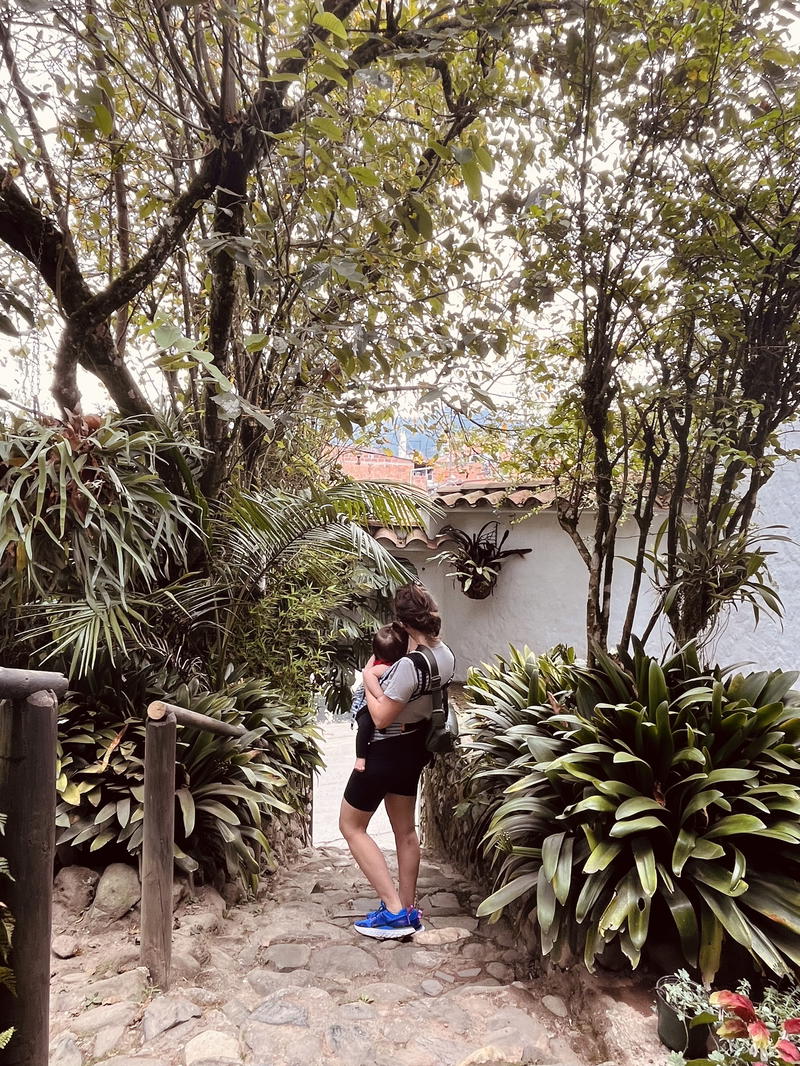
On our Canada trip, we planned the legs of driving for our day trips from Halifax around when we thought she would nap. Because she was so sick (poor girl) and tired, this worked out ideally.
Try to still have fun
Somehow, our toddler is always in pretty good spirits, even if she has a fever. On the days in Colombia when she had a fever and congestion, we planned around a liberal nap schedule, and still did the things we knew we should be doing on vacation, like going out to restaurants and doing some easy sightseeing.
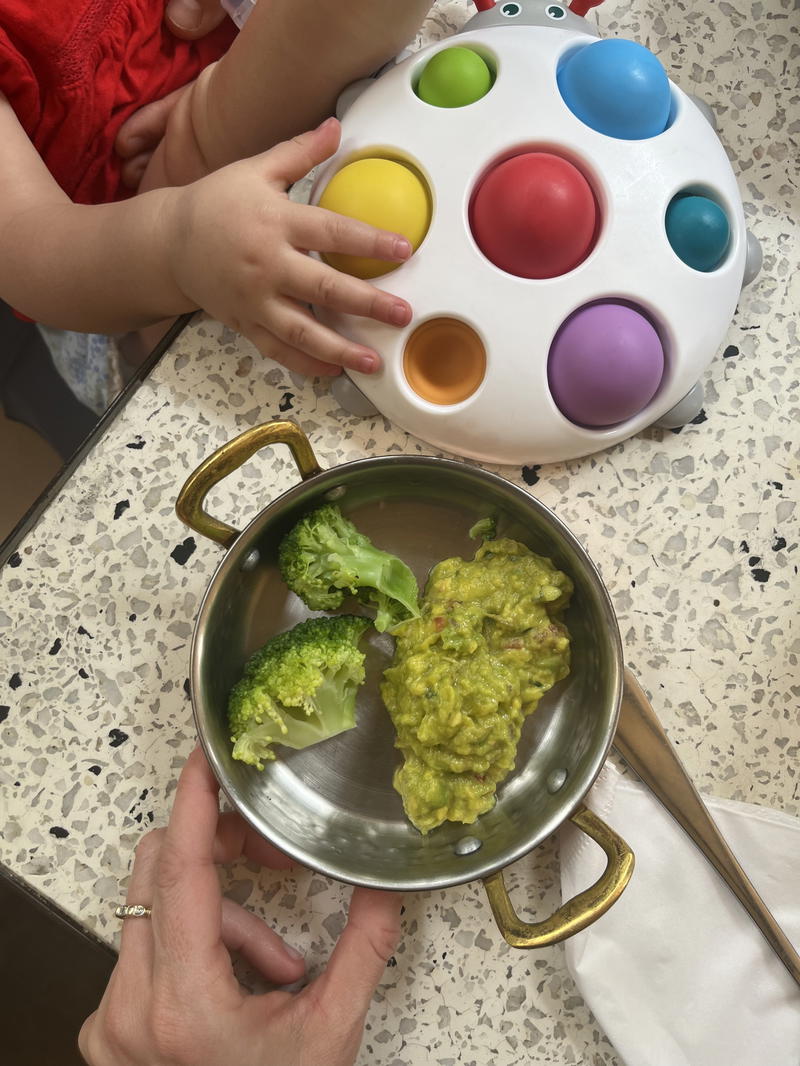
It’s true: as the years go on, we’ll forget that she was sick, and we’ll remember that we made the best of it, like how we played with her toys while out to lunch, and how we tried to brighten her mood by pointing out dogs every time we saw one.
Prepare as best you can for your next trip
After our trip to Canada, it was lesson learned for us: always travel with a thermometer, especially when traveling outside the US, where it may be harder to find baby products to our liking.
Much like how I’d suggest for an adult to avoid getting sick while traveling, there are some things in your control.
A part of my default travel packing list for our toddler is the medications component: I travel with a thermometer, fever reducers, and Benadryl — all of it’s for “just in case.” So far, traveling outside our home country seems to mean that someone’s going to get sick, and it’s better safe than sorry.
✈️ Did our travel tips help?
We share honest, experience-backed advice to help you with smoother trips. If our suggestions saved you time or stress, treating us to a coffee lets us keep researching the next post.
Fuel more travel adviceYou may also like
-
![]()
20 Ideas for Working Out While Traveling (Real Things We Do)
I’ve found the best ways to work out and exercise while traveling! Even if you’re not a pro, use these fun ways to get into fitness while you’re on vacation or a trip.
-
![A list of baby items laid out on a marble table.]()
Road Trip with Baby: Essential Travel Packing List & Tips
How do you take a road trip with a baby for the first time? Check out my essential travel packing list for everything your infant needs during a trip.
-
![]()
19 Exciting Solo Travel Destinations in 2025 (From Real Travelers)
What are the best ideas for unique solo travel destinations? Check out these popular cities and countries for traveling on your own — some may surprise you.
-
![]()
How to Survive Plane Travel with a Toddler (17 Tips for Parents)
How do real parents survive flying with a toddler? My friends and I pooled these tips for the easiest and smoothest plane travel with a toddler, from how to pass the time and how to stay calm.
-
![A person standing on top of a mountain.]()
19 Sustainable Travel Tips for an Eco-Friendly Mindset
Learn how to travel more sustainably! We’re conserving resources and traveling healthier with our favorite eco-friendly products and sustainable travel tips.
-
![]()
How to Pack a Suit for Travel (Step By Step Guide)
How do you fold a suit without it wrinkling, and pack it into a packing cube in carry-on luggage? Here’s my best foolproof way to pack suit pants and a suit jacket for travel.
